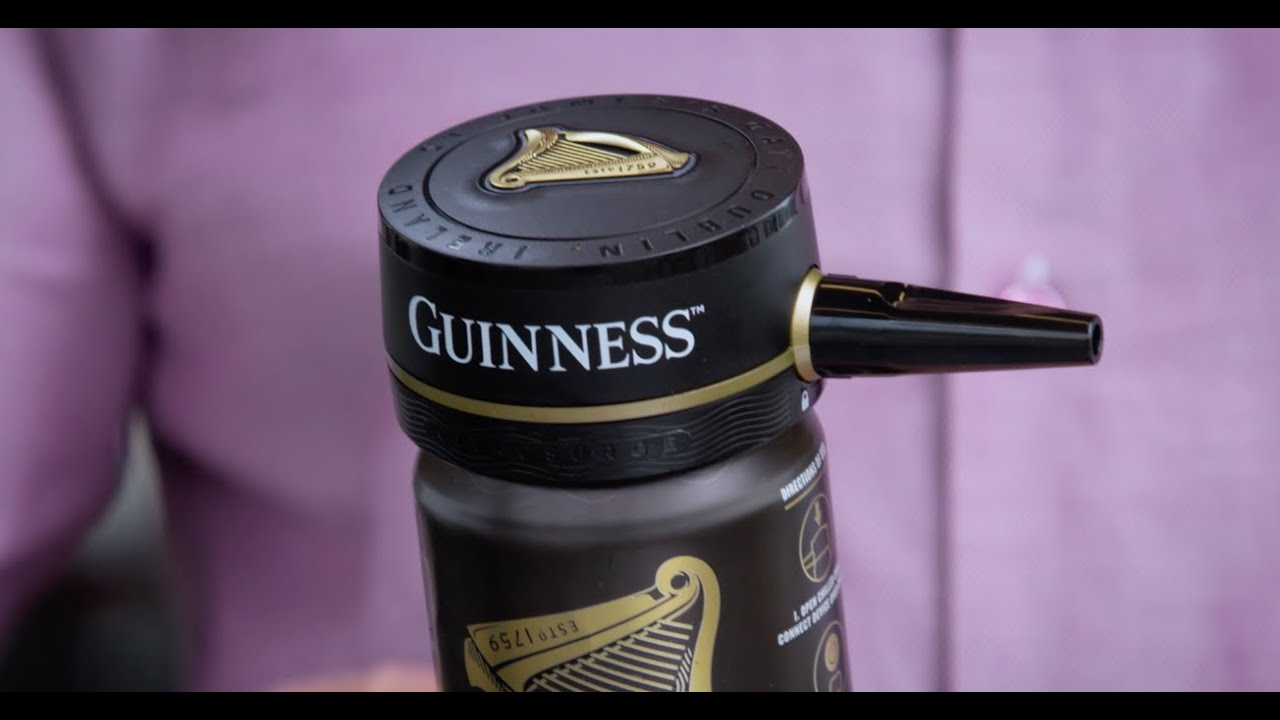Ever since 1959, Guinness beer has used nitrogen as the gas to pressurise its beer instead of the carbon dioxide naturally produced by fermentation and used to pressurise almost every other beer. Nitrogen is far less soluble in water than carbon dioxide, which means that when pressure is reduced and it comes out of solution, the resulting bubbles are much smaller, which creates the creamy “head” on Guinness. When served on draught at a pub, the beer is made to foam by the nitrogen’s forcing it through a plate with fine holes in the tap. Bottled and canned Guinness “Draught” beer have, since 1989, been packaged with a plastic device actually called a “widget” inside, pressurised with nitrogen, which, when the container is opened and pressure released, releases the nitrogen in a controlled fashion, making the foamy head. The widget is the subject of U.K. patent 1,266,351 [PDF], filed in January 1969 and granted in March 1972.
But connoisseurs of Guinness said that the Widget, however clever, was just not the same as the genuine draught experience with the traditional “double pour” delivery which, when done as prescribed by the brewer, takes precisely 119.53 seconds. This is the twenty-first century, after all—along with the flying cars, holidays on the Moon, electricity too cheap to meter, and two hundred year lifespans to which we’ve all become accustomed, how difficult can it be to pour a proper pint of Irish stout from a can in your fridge?
In September 2021, Guinness announced “Nitrosurge” (frequently-asked questions), in which beer is packaged in 558 ml (0.98 imperial pint) aluminium cans, pressurised with nitrogen, but without a widget inside, and a companion “Device” (you’d think, having called the original one “widget”, they’d be able to come up with something more clever—“foam-o-tronic”, say) that attaches to the top of the can and uses an piezoelectric ultrasonic transducer to “surge” the beer flowing through the spout in pulses. The ultrasonic energy produces cavitation in the fluid, just as in an ultrasonic cleaner, which nucleate the formation of bubbles from the dissolved nitrogen, forming the head.
But what’s inside the “Device”? Let’s get out the Dremel and find out!
Here is Steve Gilsenan, Guinness head of quality, demonstrating Nitrosurge.

